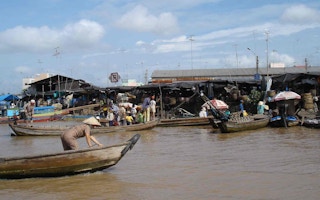The amount of water that will be released from a Chinese dam until 10 April could be too low to help alleviate drought-stricken South-East Asia.
The Chinese government has not clarified the exact amount of water to be released from the Jinghong dam, located in the southwestern province of Yunnan, so the extent to which the water releases might impact the aquatic ecosystems of the Mekong River Basin is uncertain, Ian Baird, an associate geography professor at the University of Wisconsin-Madison in the United States, tells SciDev.Net on occasion of World Water Day on 22 March.
Moreover, the sporadic huge releases of water might prove to be damaging to aquatic life and farms.
“What is needed are flows that mimic natural water levels, not sporadic water releases from dams. This has been a problem with other dams in the past such as the Yali Falls dam in Vietnam,” says Baird, who co-authored a 2002 study on the impact of that dam on villagers in northeast Cambodia and has extensive experience in the impact of water releases from dams in South-East Asia.
“The study, which was partially funded by the international charity Oxfam, found that large surges of water over short periods that contain very little sediment in it caused a lot of erosion downstream and amounted to almost US$2 million in loses in one remote province alone (Ratanakiri Province), mainly in lost boats, fishing gear and lost animals.”
Diana Suhardiman, a Laos-based social scientist at the International Water Management Institute, tells SciDev.Net that China’s actions must be considered within the context of its “One Belt, One Road” initiative. The move partly aims to force for cooperation and investment in infrastructure in the lower Mekong region. In 2014, China proposed the Lancang-Mekong Cooperation, a sub-region partnership with Cambodia, Laos, Myanmar, Thailand and Vietnam.
“China wants to make sure that its presence in the lower Mekong basin is acknowledged formally not just in terms of investment, but also politically,” Suhardiman says.










